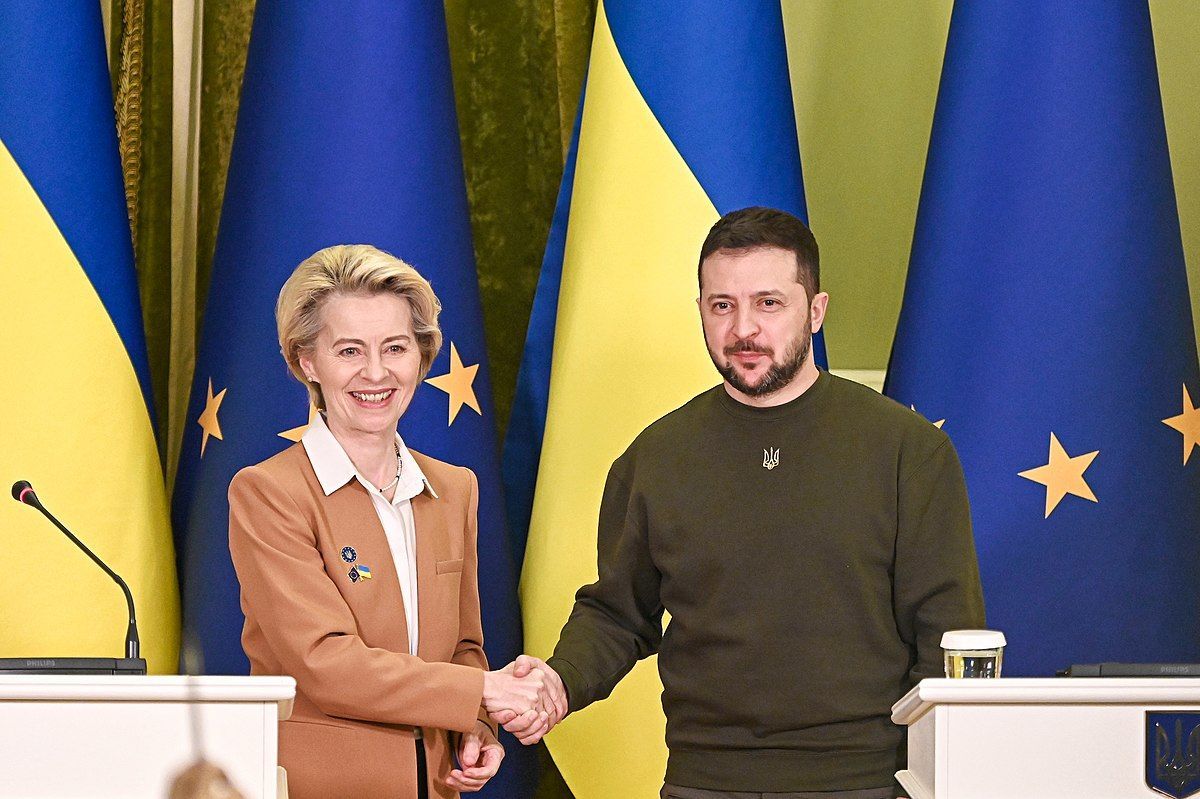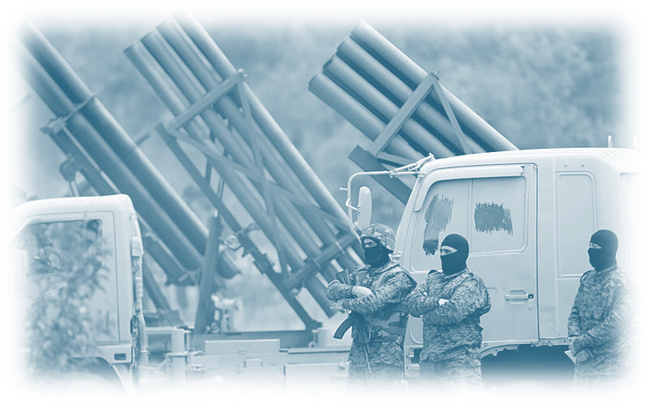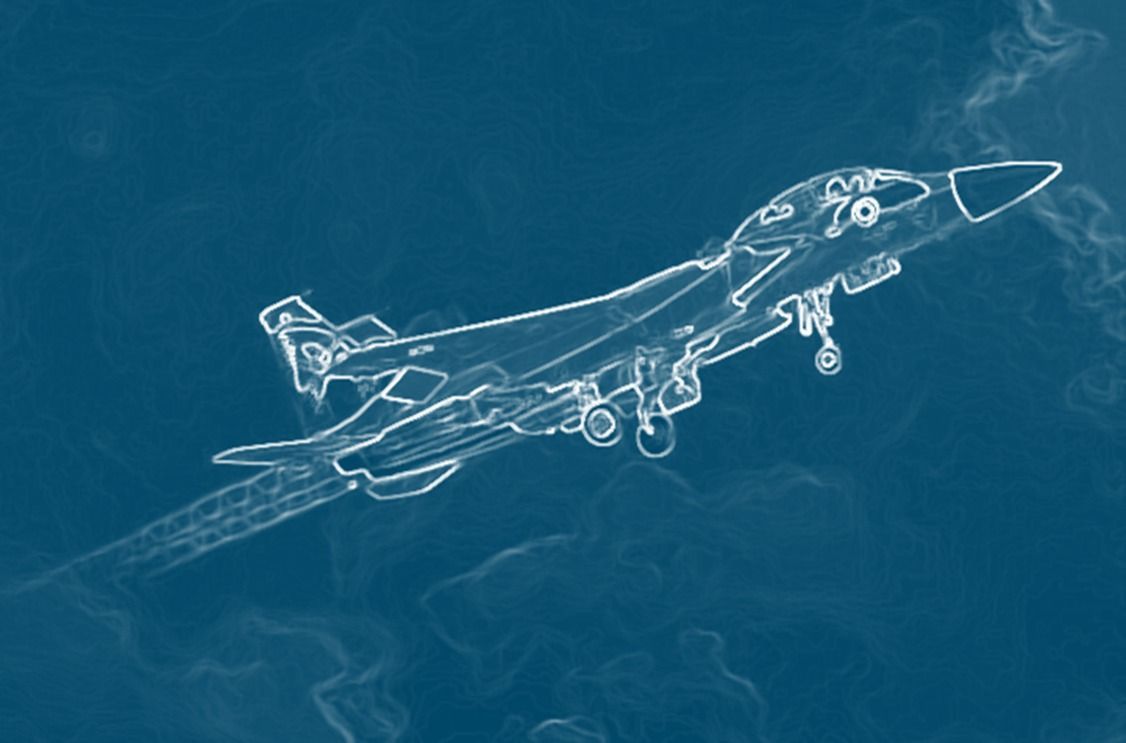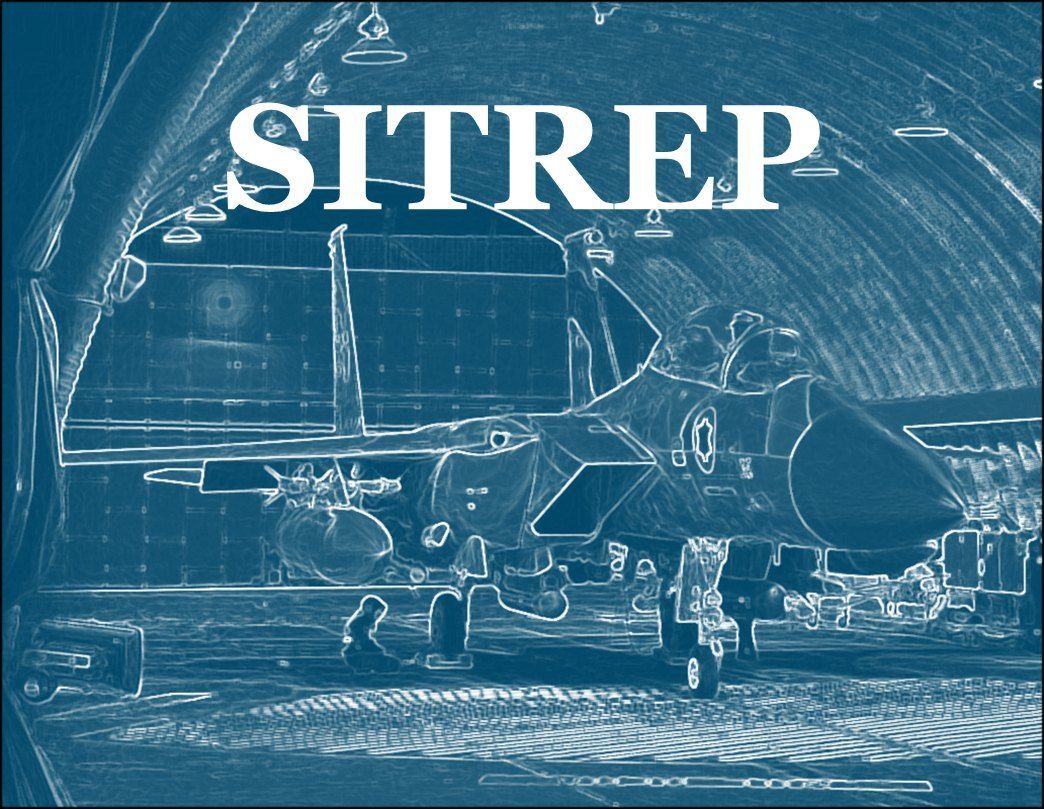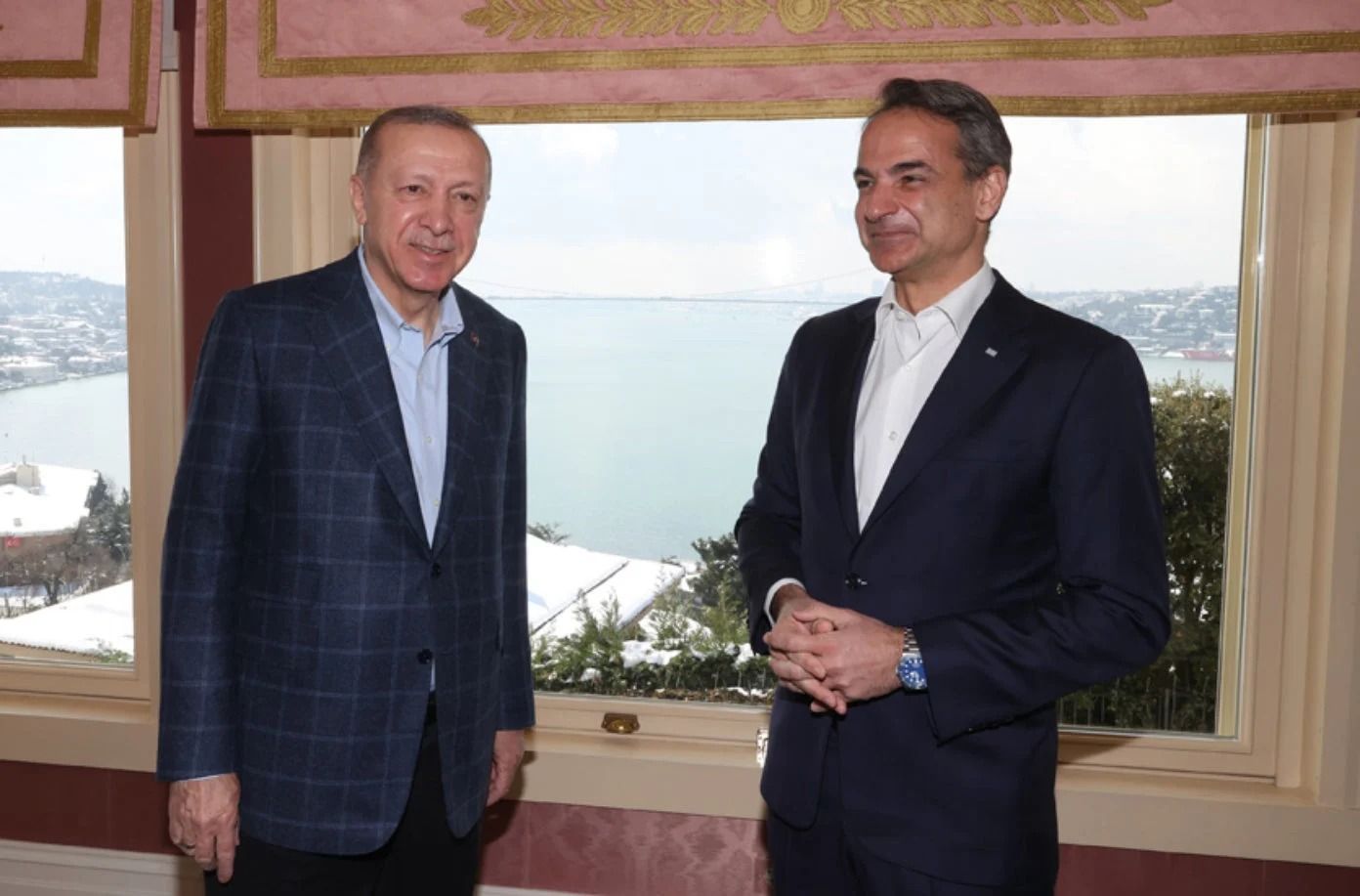18 December 2020
Insurgents are gaining a strong foothold in Mozambique's northern province of Cabo Delgado. So far, the government has failed to stop them.

^ A soldier surveys the aftermath of an attack by insurgents in 2018 on Nanunde, Mozambique. Source: Joaquim Nhamirre/AFP via Getty Images
Since 2017, a shadowy Islamist insurgency has destabilised the gas-rich province of Cabo Delgado in northern Mozambique. Violence erupted on 5 October 2017, when 3 police stations in the town of Mocimboa da Praia were assaulted by about 30 militants. Since then, the increasingly tenacious insurgents have intensified operations in the region and struck at targets in neighbouring Tanzania.
According to figures from the Armed Conflict Location & Event Data Project (ACLED), approximately 2,370 people have been killed in the time between the beginning of the insurgency in October 2017 and November 2020. The UNHCR estimates that at least 355,000 people have been displaced by the continued violence in Cabo Delgado over roughly the same period of time.
In addition to the human costs, the insurgency imperils Mozambique’s economic prospects. Cabo Delgado’s coastal area is rich with natural gas. This year, the French oil giant Total, singed the biggest project financing agreement in African history - a senior debt financing agreement for its vast liquified natural gas (LNG) project worth $14.9 billion. This is one of several such projects in Cabo Delgado, worth a combined $60 billion. Thus far, mounting insecurity has not frightened away investors, but further destabilisation to the region could derail economic development.
Despite efforts by security forces to restore order in Cabo Delgado, the government’s attempts to neutralise the insurgency have been largely impotent. Mozambique’s president, Filipe Nyusi is no doubt hoping that a deal recently struck with Tanzania to cooperate against the insurgents will help to restore peace and order in the region. However, it remains to be seen whether the government will adopt a nuanced strategy to deal with the insurgency or continue to blunder with an ineffective military campaign.
What do we know about the insurgents?
The flow of information from Cabo Delgado to the outside world is limited, so it is difficult to establish firm facts about the nature of the insurgency. The insurgents have been referred to by many names but the most accurate appears to be Ahlu-Sunnah Wa-Jama (ASWJ), also referred to as Ansar al-Sunna. Many of the locals refer to the insurgents as al-Shabaab, but they do not belong to the more infamous group which primarily operates in Somalia.
The Islamic State of Iraq and the Levant (ISIL/ISIS/IS) is active in the region, but to what extent is hard to determine. ISIL first claimed involvement in June 2019, boasting that its forces had repelled a government attack.
Since 2019, many media outlets have referred to the insurgency as ISIL, or as an ISIL affiliate. Militants in Cabo Delgado have been pictured posing with Islamic State flags, so it could be that ISIL fighters have been drawn to the conflict or that ASWJ has aligned itself with ISIL. ISIL’s affiliate, Islamic State Central Africa Province (IS-CAP), could also be involved.
However, it is possible that ISIL has an extremely limited presence in Cabo Delgado. ISIL motifs are not sufficient proof of direct involvement and only proves that certain ASWJ militants are sympathetic to the larger Islamist group. ISIL also tend to claim responsibility for any acts of Islamist terror or insurgency for propaganda purposes, regardless of their actual degree of involvement. Thus far, Mozambican police have denied ISIL or IS-CAP involvement in Cabo Delgado.
Al-Qaeda have taken credit for terrorist attacks in the region but there is less evidence for their involvement than there is for ISIL.
Most evidence points to ASWJ, a locally based group, being responsible for the majority of attacks in Cabo Delgado since 2017. It is unclear what ties ASWJ has to foreign Islamist organisations, or the degree to which such organisations may be involved in Mozambique. It is probable that ASWJ has established some kind of connection to ISIL in recent years.
What motivates ASWJ?
ASWJ itself, does not publish much in the way of propaganda and has made scant use of social media and the internet to spread its message. Most of what is known about the group has therefore come from local reports and what civilians have said about the insurgents. The Mozambican government has been equally vague and shared very little of its intelligence with the outside world.
ASWJ is thought to have emerged in 2015 as a fundamentalist religious movement before its members engaged in militant activities. Early members of ASWJ, or the group which proceeded it, are believed to have been followers of the radical Kenyan cleric Aboud Rogo Mohammed. This fundamentalist interpretation of Islam contradicts the Sufi-inspired Islam practiced by the majority of Muslims in Cabo Delgado and was likely introduced by young men who had returned from studies abroad in Sudan, Saudi Arabia, and the Gulf States.
The early organisation is known to have operated at least two Mosques in Moocimboa da Praia from which they could spread their ideology. This harkens back to more traditional means for Islamists to recruit members, which have been supplemented by ideological messaging on social media and the wider internet. Many youths who received their religious educations in these Mosques are now old enough to fight for ASWJ.
Most ASWJ militants belong to the predominately Muslim Mwani ethnic group, who hail primarily from Cabo Delgado and possess a strong attachment to the coastal areas. Youths from other northern provinces in Mozambique, such as Nampula, have also been drawn to ASWJ. Further afield, recruits have come from neighbouring Tanzania, as well as the Congo, Uganda, Gambia, and Burundi.
Youths in Cabo Delgado and neighbouring provinces may find ASWJ’s ideology alluring due to the socioeconomic realities they face in their daily lives. A 2019 report by the Center for Strategic and International Studies (CSIS) highlighted that ASWJ members are motivated by a combination of local grievances, economic ills and political marginalisation.
Despite Cabo Delgado having become more attractive for foreign investment due to its gas reserves, the local population has benefited little from these developments. The southern and Maputo-based elite have increasingly monopolised on business opportunities in the region. Meanwhile, people of Mwani descent have bemoaned a lack of economic opportunities, growing marginalisation, and neglect.
ASWJ’s ultimate objective appears to be the establishment of its own breakaway state, comprising of territory in northern Mozambique and southern Tanzania. Dr Eric Morier-Genoud provides an analysis that Islamists in the region adopted a violent strategy when they sought to achieve their goal of living in a ‘sharia-based political order’ by forcibly changing society rather withdrawing from it.
How do the insurgents operate?
ASWJ and insurgents in Cabo Delgado have demonstrated growing operational sophistication and have thus far stumped the government’s efforts to diminish their capabilities. Hit-and-run raids on isolated villages and ambushes of security forces remain the mainstay of ASWJ armed activities, but the group has shown a willingness over the last year to hold onto captured ground for longer periods of time. ASWJ has also been able to pull off increasingly complex attacks on land and sea.
Thus far, ASWJ’s leadership has been operationally astute in the selection of its targets. Since the insurgency began in 2017, the port town of Mocimboa da Praia has been a focal point for the insurgency.
This year, the town has become the site of a deadly tug of war between ASWJ and government forces. On 23 March ASWJ launched a combined assault from land and sea on Mocimboa da Praia. The insurgents destroyed government buildings and redistributed stolen goods to locals before withdrawing on the same day. On 27 June, ASWJ captured the town again but withdrew from approaching government forces three days later.
Mocimboa da Praia was captured a third time this year by insurgents in August. On 5 August, insurgents begun their attacks by capturing villages on the approach to Mocimboa da Praia as well as some neighbourhoods on the outskirts of the town. Most civilians fled but some were abducted in the village of Anga where there was widespread arson. The following day, insurgents reportedly struck at government forces with mortars to screen the withdrawal of several insurgents via boats. After a few days of fighting, government forces were repulsed to Mocimboa da Praia’s port district, with the rest of the town having fallen into ASWJ’s hands.
The battle for Mocimboa da Praia was nearing its climax on the 10 August. Government forces were pinned down in the port district and running low on ammunition. An attempt by Dyck Advisory Group (DAG) contractors to resupply government forces by helicopter failed. More disastrously, a convoy of government reinforcements were ambushed en route to the besieged town at Awasse. The reinforcements were mostly new recruits and suffered over 55 losses. Back in Mocimboa da Praia, one of the two HSI32 Interceptor ships which attempted to enter the port was destroyed by insurgents armed with rocket propelled grenades (RPGs). The town fell the following day and the remaining government forces withdrew to an extraction point where DAG helicopters picked them up.
Mocimboa da Praia is strategically important for several reasons. The port serves the Mozambican military as its primary logistics hub for operations in northern Cabo Delgado. The town was previously a base for government armoured vehicles and the navy used the port as a resupply point. Without a firm hold on Mocimboa da Praia, government forces risk stretching their supply lines thin during operations further north into Cabo Delgado.
Possession of the town grants insurgent forces greater flexibility to conduct amphibious operations against nearby coastal targets. For instance, in the same month Mocimboa da Praia fell, the nearby island of Nhonge came under attack. Insurgents stole supplies from shops, abducted civilians and beheaded several men before returning to the mainland.
Another focal point of ASWJ operations has been along the N380, which is the main north-south road in Cabo Delgado. Controlling this road confers several advantages, the most important being the leverage it grants insurgents over the civilian population who depend upon the road for transport. The alternative route is a poorly maintained dirt road which is likewise beset with insurgent activity.
ASWJ could bolster its finances further by imposing tolls on the roads. More lucratively, insurgents could control the narcotics-smuggling routes which are rife across Cabo Delgado. Thus far, ASWJ has strayed little from its original form as an ideologically-driven Islamist insurgency, but it is not uncommon for insurgencies to trade ideological purity for criminal profiteering as they mature.
How do the insurgents interact with the civilian population?
The civilian population is regarded by many scholars and practitioners as the centre of gravity for both the insurgents and the counterinsurgent forces during an insurgency. Through combination of terror and so called ‘hearts and minds’, insurgents can use the civilian population as a source of supplies, recruits, and concealment. Thus, it is important to consider ASWJ’s relationship with the civilian population in Cabo Delgado.
ASWJ has not shied from the use coercion and terror against civilians, either to rob them of supplies or force them to comply. The group has been known to execute civilians en masse. For example, in May 2018 at least 10 individuals were beheaded in Monjane village. Children are believed to have been among the dead. In November this year, more than 50 people were beheaded in another village where insurgents converted a football pitch into a theatre of execution.
In other instances, insurgents have been careful to avoid civilian casualties. For example, in March this year ASWJ warned the residents of Quissanga to vacate the area prior to their assault on Mocimboa da Praia. Seven months later, insurgents granted older and poorer residents of coastal areas of Macomia district a sum of $125 to help flee from impending attacks. This may seem contradictory, but it conforms to a strategy of fear coupled with hearts and minds, which has commonly been employed by insurgencies throughout history.
As a part of this hearts and minds strategy, ASWJ have tried to incentivise the civilian population to join their cause, or at the very least tolerate their presence. The insurgents leverage local grievances in Cabo Delgado, both to undermine support for the government and entice new recruits.
More effective still, ASWJ have sought to replace state functions with their own. Insurgents will typically target government services and infrastructure, like administrative buildings, schools, and medical facilities, which renders good governance nigh-impossible. ASWJ will then take over the provision of basic goods and services to the civilian population. This undermines the legitimacy of the government whilst enhancing their own.
Why is the government failing in Cabo Delgado?
Nyusi’s government has been far from transparent regarding its efforts to restore order in Cabo Delgado, but the response is known to be primarily driven by the security services. However, the predominately kinetic approach by the military and security services is being undermined by three main factors.
The first of these is the ineptitude of the military and security services. There are wide ranging reports of poorly performing troops who suffer from bad morale and have been given insufficient training.
According to research published by Tim Lister, the Editor-in-Chief of West Point’s CTC Sentinel, ‘poor training, a lack of equipment (especially protected transport), interdicted supply lines, and difficult terrain have hampered the Mozambican armed forces’ operating in Cabo Delgado.
Another report by the Chr. Michelsens Institute (CMI) released this year revealed members of the rank and file of the Mozambican army said that, ‘they feel ill equipped and abandoned in the bush to fight an ill-defined and anonymous insurgent’. The CMI report also highlighted abysmal morale amongst troops, some of whom have sold their uniforms and weapons to opposing force and fled from the conflict.
The second issue undermining the counterinsurgency (COIN) campaign in Cabo Delgado are human rights abuses inflicted upon the civilian population by military and security personnel. This year, footage emerged showing the murder of a woman by what appeared to be members of the Mozambican Armed Defence Force. She was beaten with a stick before four soldiers shot her 36 times and left her naked corpse on the road.
The full scale of human rights abuses by the military in Cabo Delgado are not known, but the murder footage is likely emblematic of a more widespread issue. Flagrant human rights abuses, such as rape, murder, and torture, will make it extremely difficult for the armed forces to build constructive relationships with the local population in Cabo Delgado and undermines trust in the government which is already low. This helps legitimise ASWJ’s narrative that the government are amoral and corrupt, which may boost support for the insurgency.
The third problem with the government’s approach in Cabo Delgado, and perhaps the most significant, is the lack of a well-rounded holistic approach to COIN. So far, the government’s strategy has been to throw force at the insurgents. Besides the fact that the government has failed to militarily defeat the insurgents; an approach which overemphasises the kinetic aspects of COIN but fails to address the underlying socioeconomic and political factors fuelling the insurgency is likely only to produce a short-term solution at best, and a total bloodbath as worst.
To their credit, the government have finally made some moves towards addressing the economic, social, and political problems in Cabo Delgado. The president has reportedly placed his most trusted officials at the head of development agencies working to improve the situation in the country’s north with allotted funds of over $2.8 billion. Finance Minister Adriano Maleiane announced this year that Mozambique will raise its expenditure to help displaced civilians from $75 million in 2020 to $129 million in 2021.
These are steps in the right direction; however, corruption and mismanagement could derail efforts to direct these funds in ways which address the underlying causes of the insurgency and benefit the local population in Cabo Delgado. After all, the insurgency is itself partially the result of government corruption and mismanagement in the region. Presently, Mozambique ranks dreadfully at 146 on the Corruption Perceptions Index
Foreign Support
The government in Maputo may be hoping that foreign support can tip the scales in their favour against the insurgency in Cabo Delgado. The provision of foreign military and police personnel could help to make up for Mozambique’s lack of credible security forces, whereas foreign financial aid could be directed towards fixing the underlying issues which have caused instability in the region.
In November this year, the Mozambican Commander-General of Police Bernardino Rafael met with his Tanzanian counterpart, Simon Sirro, in Mtwara, southern Tanzania. The two police chiefs subsequently agreed to conduct joint operations against ASWJ.
After several raids across the border into Tanzania by insurgents based in Cabo Delgado, the Tanzanian government has ample motivation to provide Mozambique with COIN support. Indeed, Tanzanian forces may help to tighten the porous border along the Rovuma River which forms the boundaries between Mozambique and Tanzania. The two countries have also agreed to share intelligence and exchange prisoners suspected of carrying out insurgent activities.
However, it is questionable whether Tanzanian security forces will fare much better against insurgents than their Mozambican counterparts. ASWJ have already demonstrated that they can conduct successful operations in Tanzanian territory. On 19 October 2020, roughly 300 militants deployed by boat across the Rovuma River to attack the village of Kitaya in Tanzania’s Mtwara Province. They burned down houses, destroyed armoured vehicles, and captured military equipment before withdrawing back to Cabo Delgado. Three Tanzanian soldiers were found dead amongst the 20 or so casualties.
Nevertheless, Tanzanian support will be welcome and if a concerted effort is made in tandem between Mozambican and Tanzanian security forces, they will stand a better chance of putting pressure on insurgents in Cabo Delgado.
Support is expected to come from Mozambique’s other neighbours, as well. Mozambique first requested aid from the Southern African Development Community (SADC) during a meeting of the organisation’s Organ on Politics, Defence and Security Cooperation, which was held in Harare in May this year.
Following a more recent meeting held between SADC heads in Maputo this December, SADC looks set to sanction military intervention in Mozambique. Zimbabwe and Malawi have already said that they will contribute troops and equipment to a SADC brigade once plans are formally approved.
Further afield, Mozambique may attract European support, motivated in part by the investment opportunities presented by the country’s abundance of natural gas. Back in October, Antonio Sánchez Gaspar, the EU’s ambassador to Maputo, said: ‘the government of Mozambique has asked for help and we will give it. But it is more aid in terms of training, logistics and medical services for the forces that are fighting terrorism in northern Mozambique.’
Foreign support should not be limited to the military space, as the government will also need to address the underlying socioeconomic causes of the insurgency. To that end, Mozambique may be able to acquire additional funding for humanitarian efforts and economic projects in Cabo Delgado from the international community. For example, the World Bank has said that Mozambique is eligible to secure $700 million in additional funding from the World Bank’s International Development Association (IDA) to address the ‘underlying causes of fragility and conflict’.
Mercenaries and PMCs
Foreign support may also be acquired from the private sector via the employment of mercenaries or private military companies (PMCs). Although they are unpalatable to many, the use of mercenaries could be directed to bolster Mozambique’s lacklustre military means.
Mercenaries have already been deployed to Cabo Delgado to tackle the insurgency, albeit in limited numbers and with disappointing results. The Kremlin-linked Wagner Group appear to have supplied the government with mercenaries until some time in 2019. Wagner had a limited presence of about 200 personnel and some air assets, which were mostly used to guard natural gas reserves and industrial facilities.
The Wagner mercenaries did not fare well. On 27 October 2019, five Wagner personnel were killed during an ambush in the Muidumbe district of Cabo Delgado. The mercenaries shared many of the limitations impeding Mozambican soldiers; they had a poor understanding of the local culture and did not have good intelligence on the region. Moreover, there was apparently little coordination or cooperation between Mozambican soldiers and the mercenaries.
Since Wagner withdrew in 2019, the Dyck Advisory Group (DAG), established by former Rhodesian and Zimbabwean military officer Colonel Lionel Dyck, has expanded its role in Mozambique’s COIN operations. DAG’s footprint in Cabo Delgado was initially a light one. Before their contract was extended in July 2020, only about 30 DAG personnel were present in Cabo Delgado, operating an entirely air-based operation, consisting of two helicopters, two fixed-wing aircraft, and two microlight armed spotter planes.
Not much is known about DAG’s future contractual obligations in Cabo Delgado, but they are believed to be expanding the air operation with the provision of a new forward base at the Macomia airstrip. DAG personnel have also reportedly been involved in training Mozambican troops. Whether DAG will deploy its own paramilitary units to fight the insurgents is unknown.
So far, the government in Maputo has used PMCs to plug capability gaps in its military, such as the use of DAG helicopters for deploying and extracting troops from the battlefield, or light fixed-wing aircraft for reconnaissance. Mercenaries have also been used to guard important infrastructure in Cabo Delgado, such as natural gas facilities.
The use of mercenaries or PMCs in a more offensive manner, such as that provided by Executive Outcomes in Angola and Sierra Leone, only seems likely if joint-efforts by the Mozambican military and foreign forces fail to quash the insurgency over a protracted period. The use of mercenaries may be a cheaper and quicker solution to the force-on-force aspects of COIN operation in Cabo Delgado, but it is bound to attract more controversy than an officially approved intervention by Mozambique’s neighbours, the SADC, or another international arbiter.
How should Mozambique approach COIN in Cabo Delgado?
The government’s strategy to restore peace in Cabo Delgado is rendered ineffective by two overarching factors. Firstly, its military and security services lack the means to defeat ASWJ. Secondly, and more importantly, even if the government could conduct a successful military campaign, they have failed to devise a comprehensive strategy which addresses the root causes of the insurgency. Therefore, any victory by the security forces would only bring about a temporary measure of peace until insurgency flared again.
Fixing the first problem will require overhauling Mozambique’s military and police forces. The government should take advantage of foreign willingness to provide support by requesting military training for its forces. Issues concerning poor morale and ineffectiveness in battle will need to be addressed, as well as the implementation of standard operating procedures which limit the occurrences of human rights abuses. The government cannot afford to further alienate the local population in Cabo Delgado.
The government will also need to look closely at the material needs of the armed forces. Insurgents have frequently been able to ambush troops operating in Cabo Delgado. The Mozambique Defence Armed Forces may be able to increase the survivability of its soldiers by acquiring armoured personnel carriers (APCs), infantry fighting vehicles (IFVs), and other armoured vehicles. Mechanised infantry have a greater chance of withstanding an enemy ambush than their motorised counterparts travelling in soft-skinned vehicles.
Addressing these issues plaguing the military will grant the government greater prospects for success at the tactical and operational levels, but a shift in strategic thinking is equally needed at the strategic level. The government should incorporate its military approach within a broader holistic strategy, which would encompass approaches to the socioeconomic and political problems in Cabo Delgado.
The government must strive to win back its legitimacy in the eyes of the local population in Cabo Delgado. This will undoubtedly involve a military element; the armed forces will need to safeguard key infrastructure from insurgents so that the government can continue to provide basic services. However, beyond this, all arms of the state should be used to improve the socioeconomic situation in Cabo Delgado in order to undermine the insurgency’s narrative and popular appeal.



